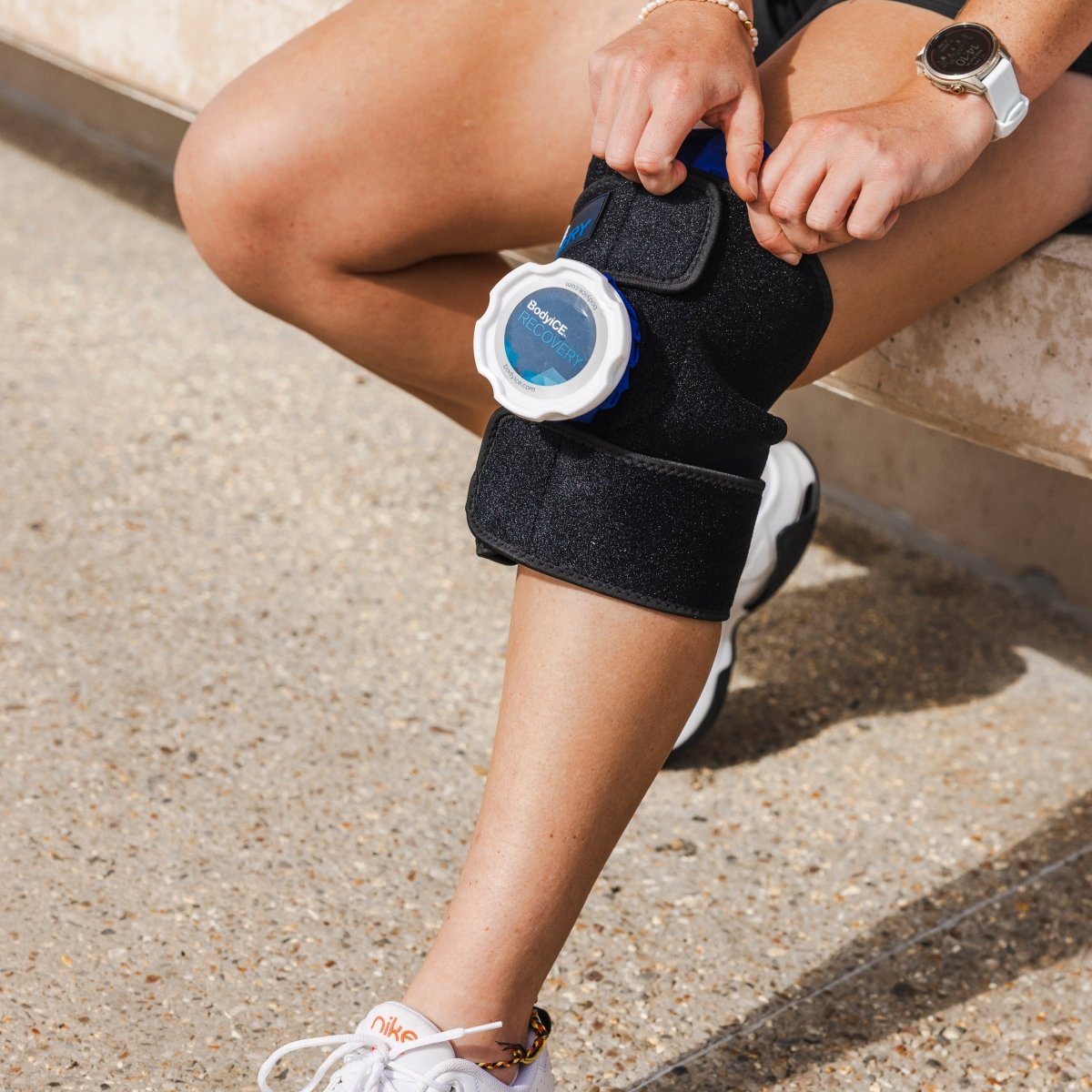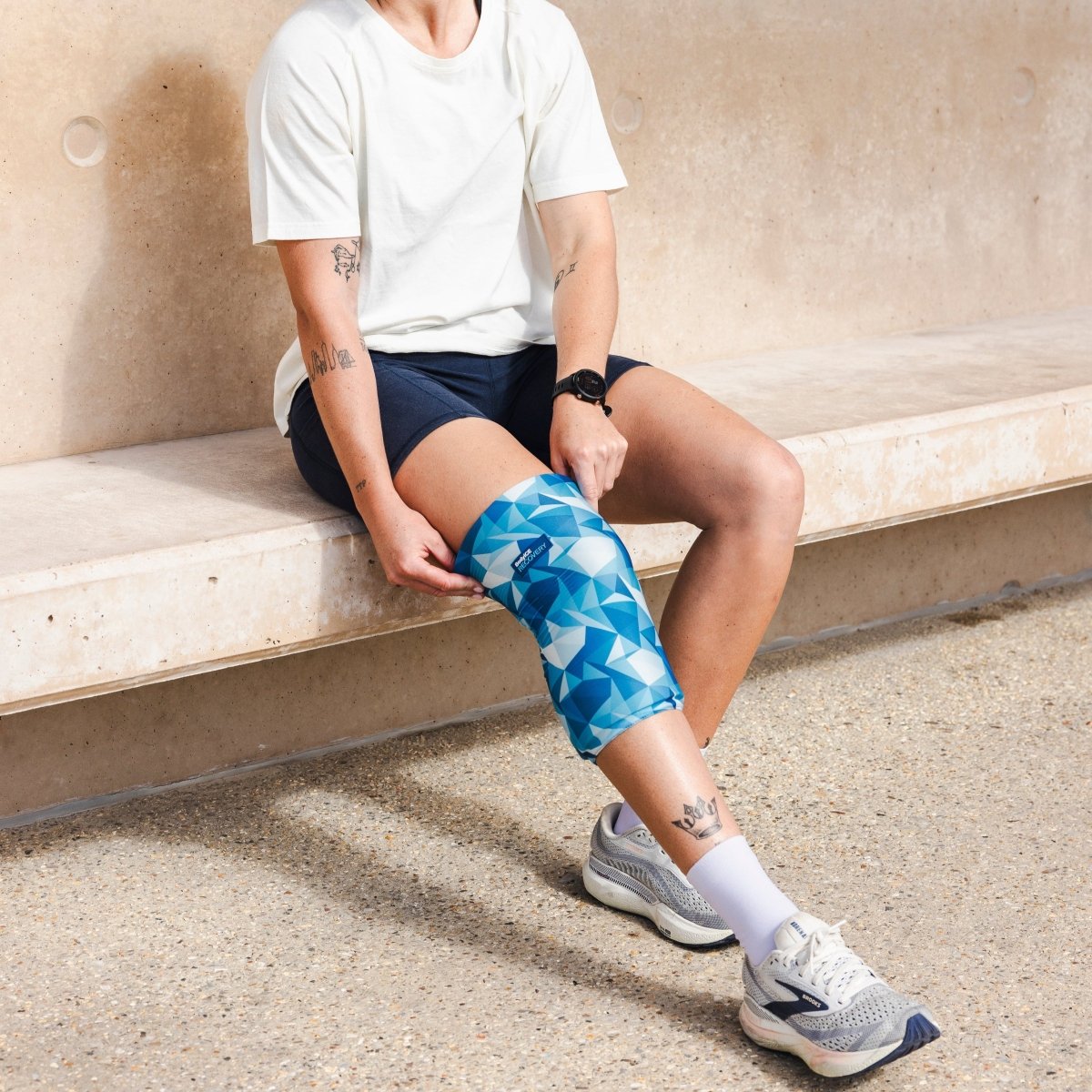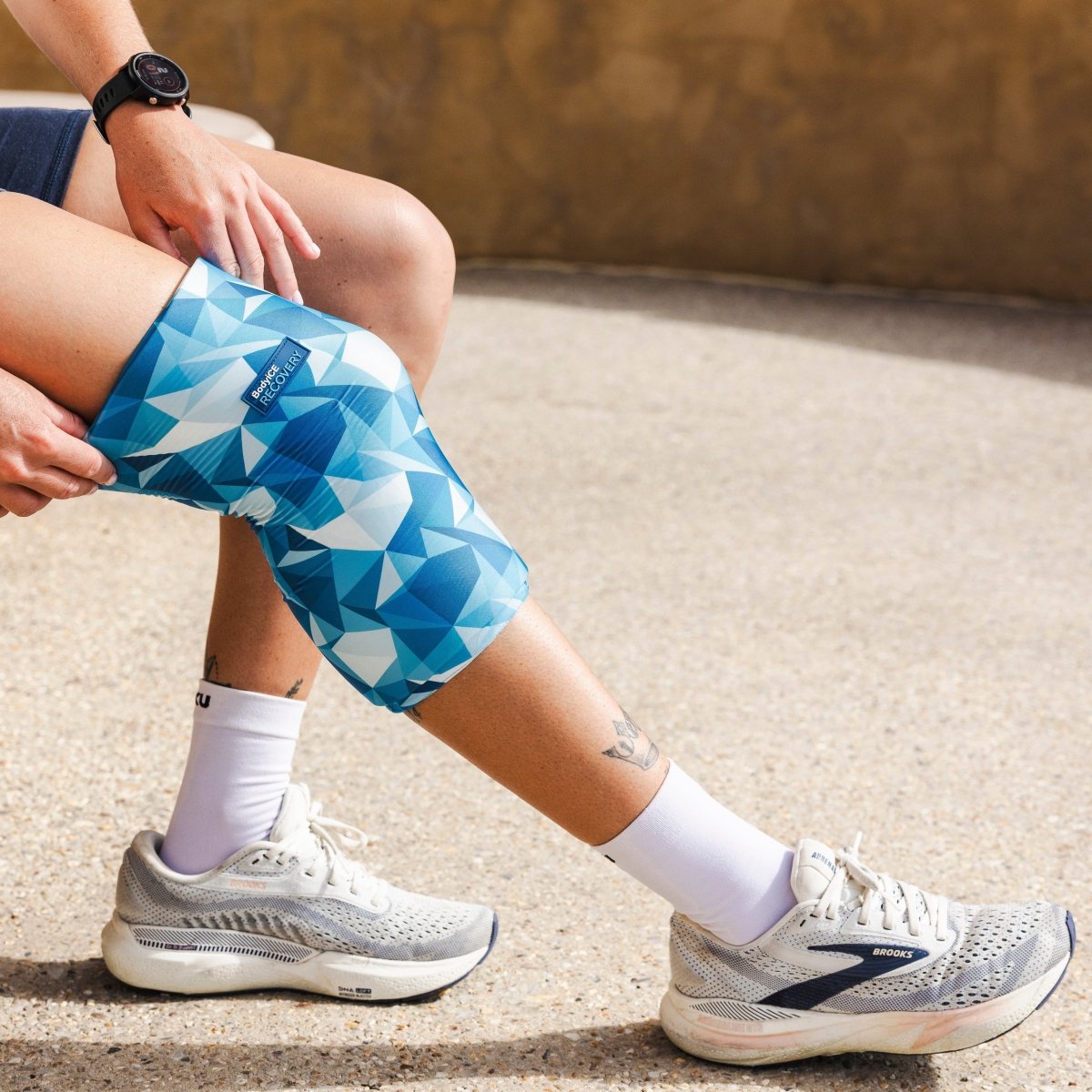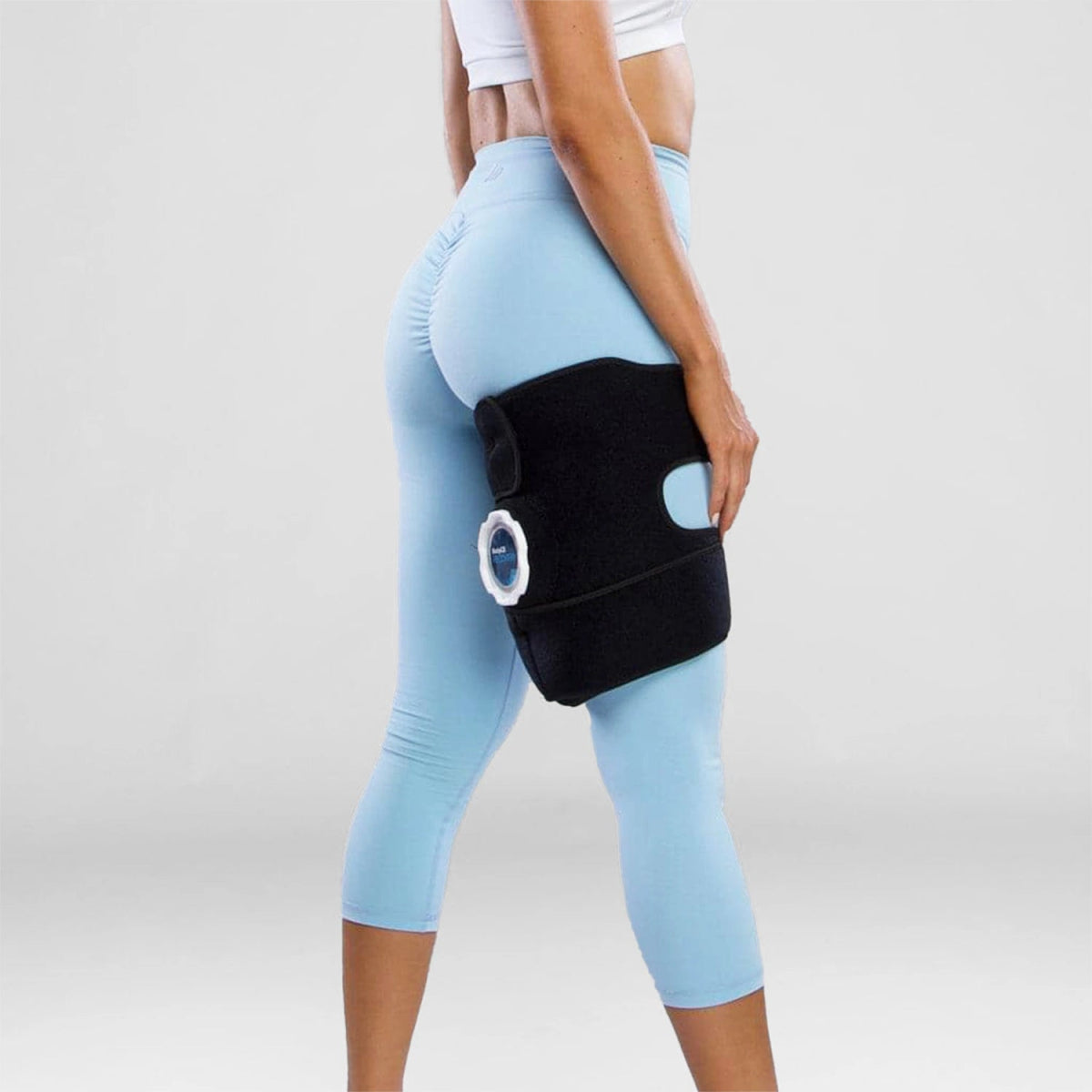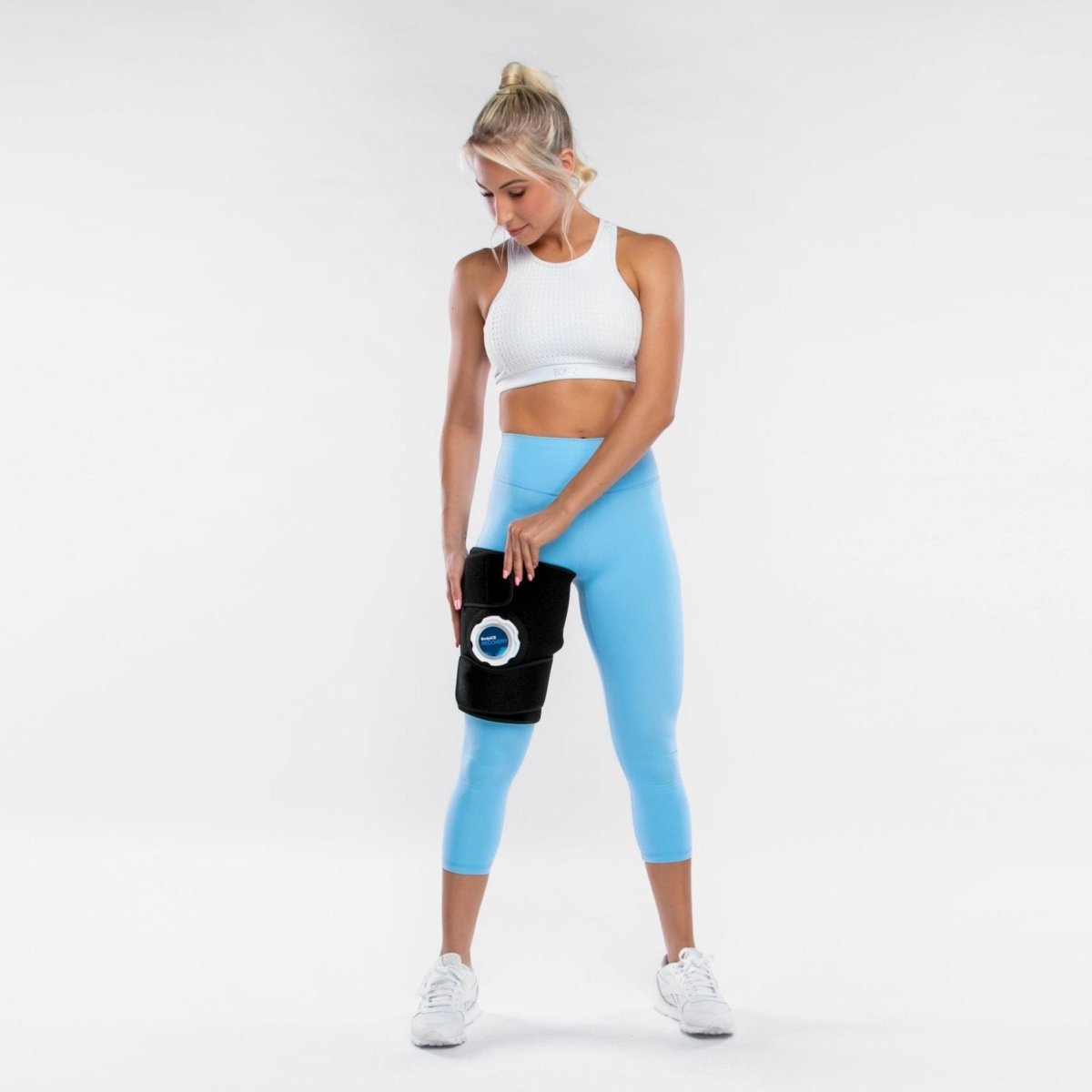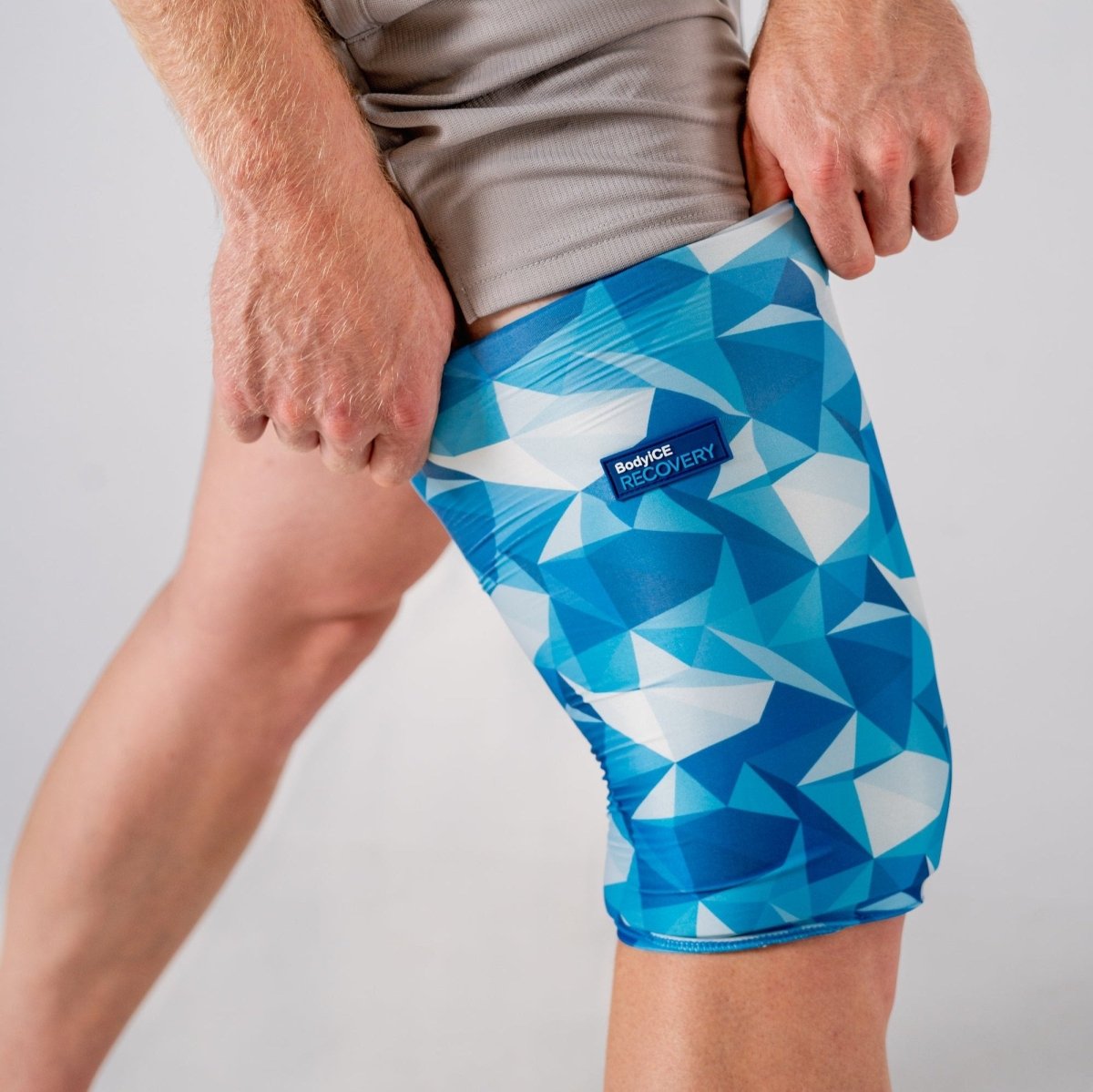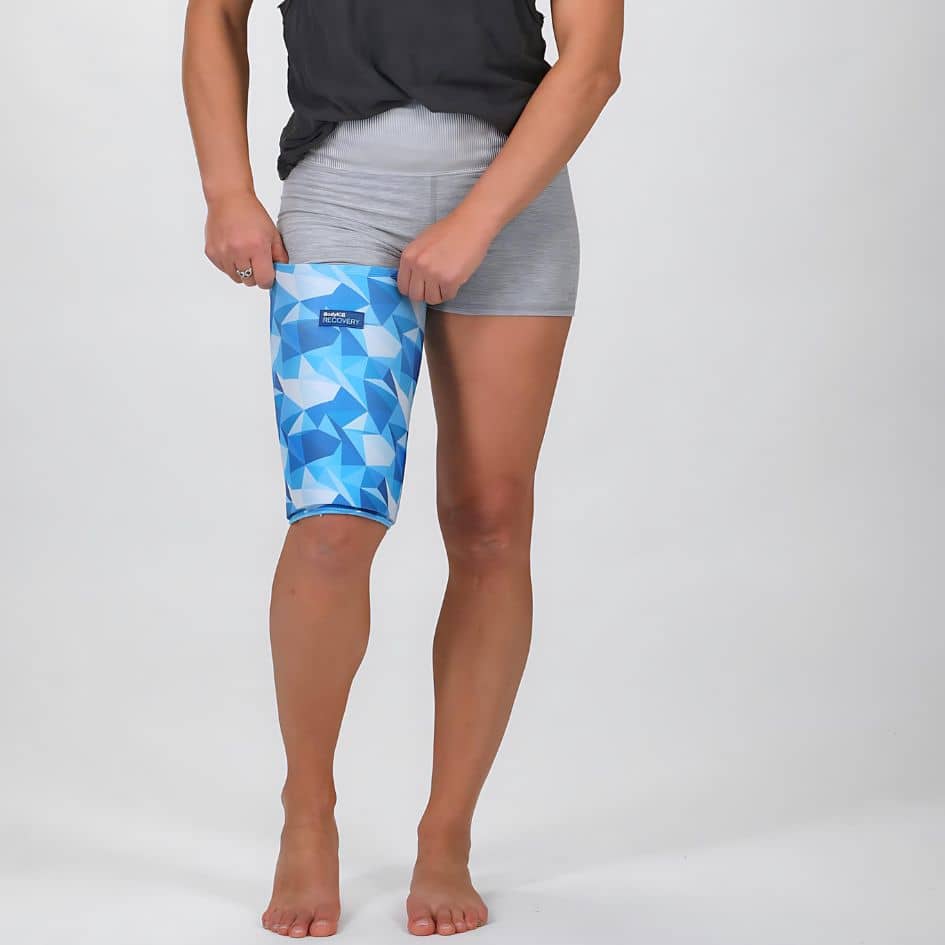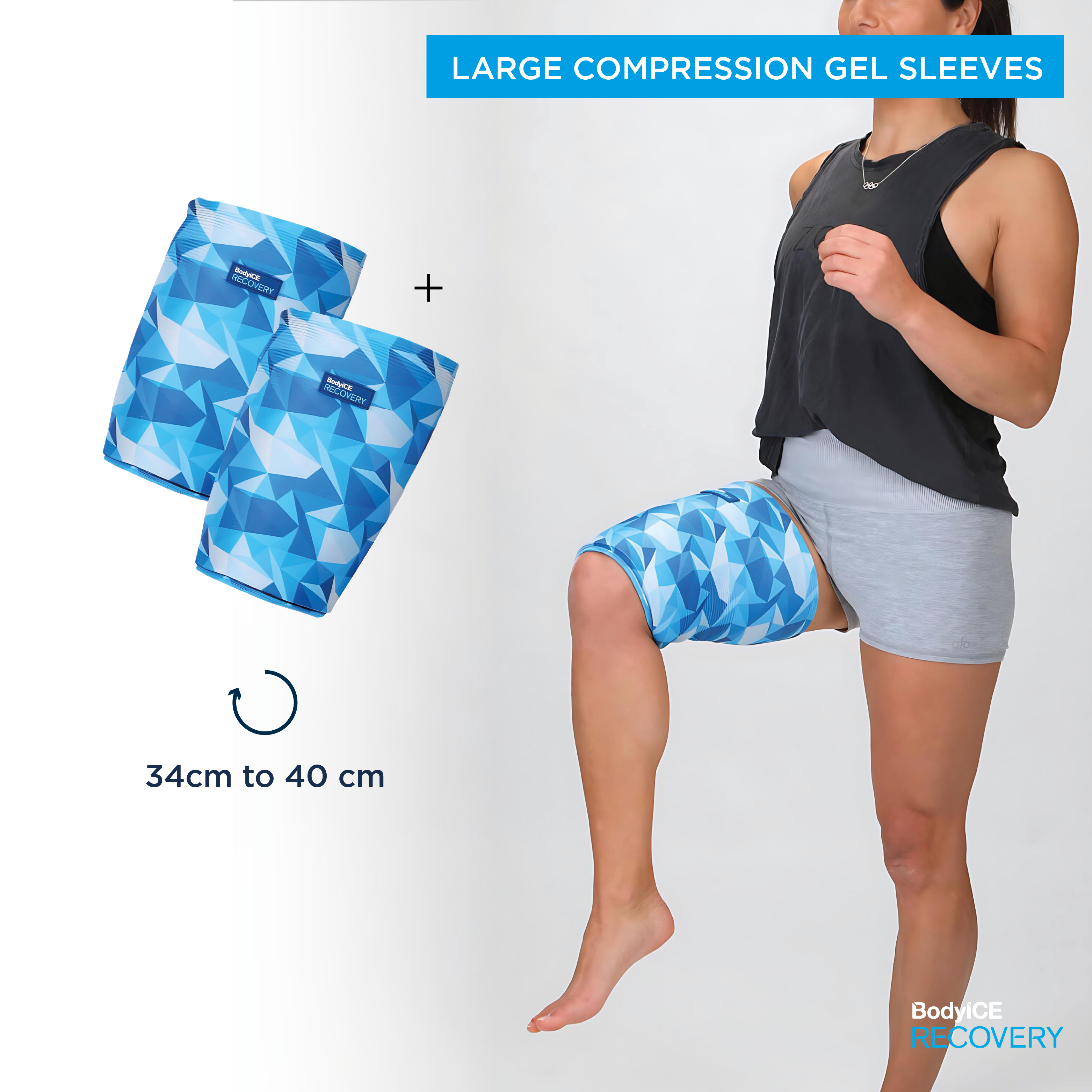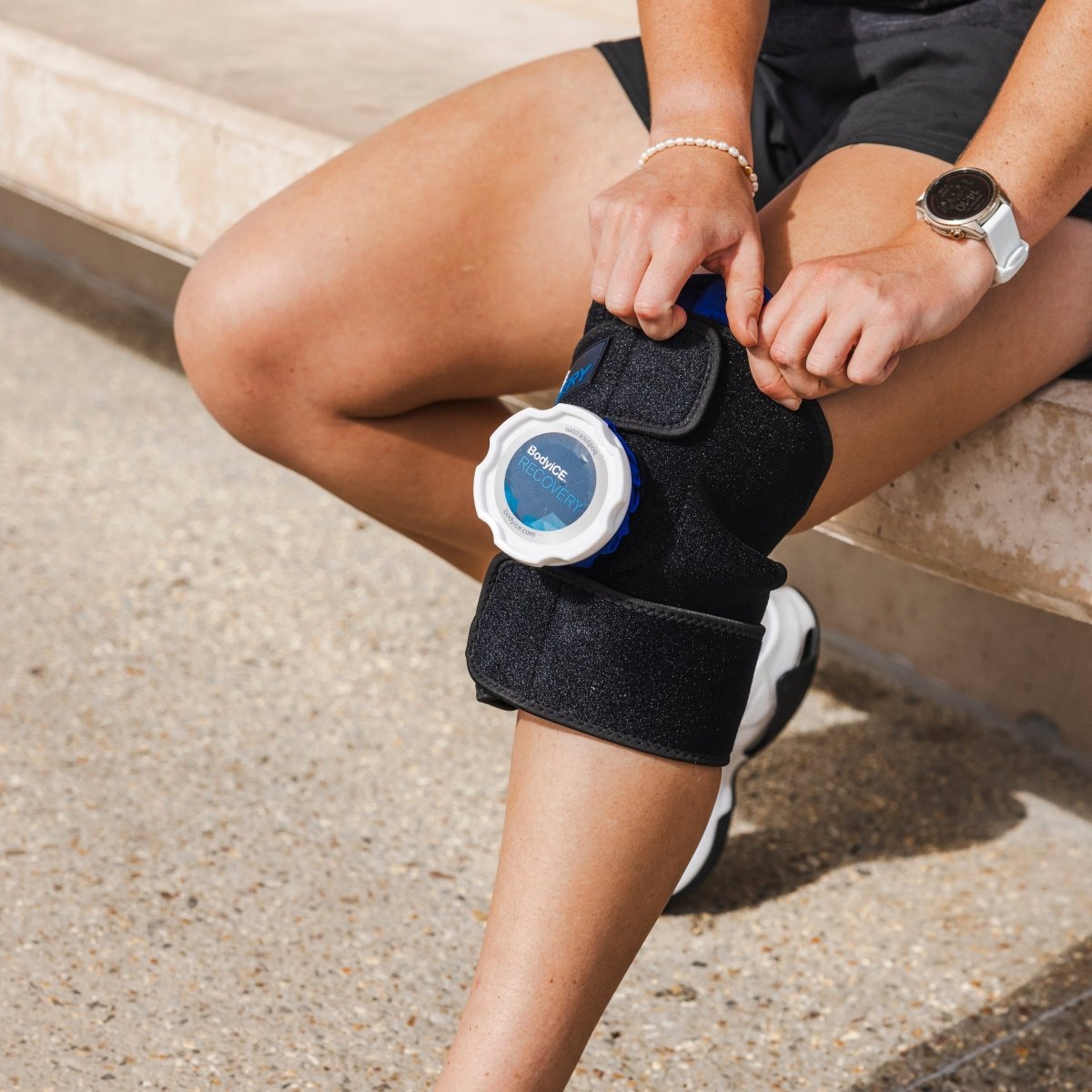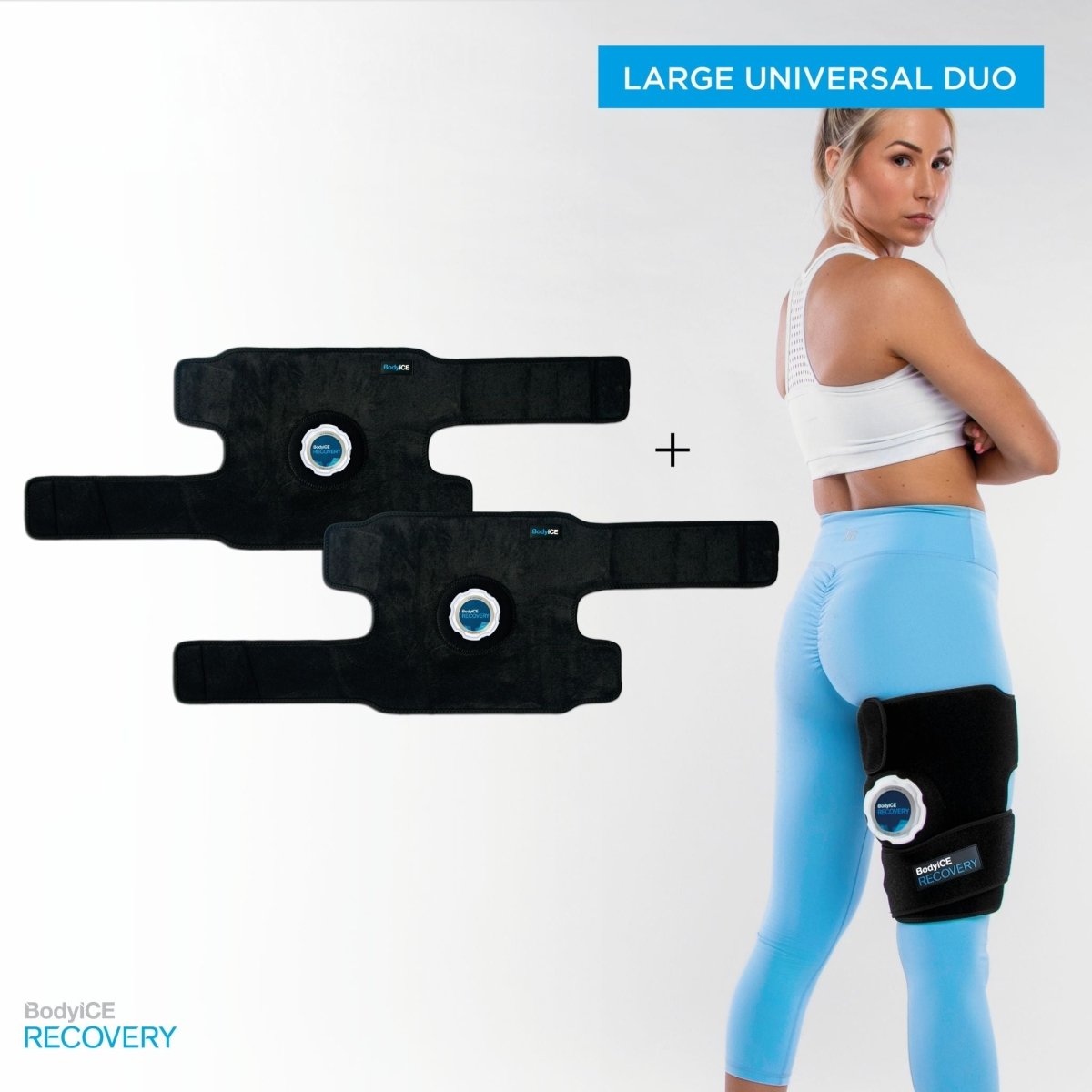Keep it simplE. Recover like a pro.
The Best Knee Ice Packs for Targeted Relief
Not all ice packs for knees are created equal. Many slip, leak, or lose their temperature too quickly, making recovery frustrating. Our classic knee ice pack with straps combines a leakproof ice bag with a secure neoprene wrap, delivering targeted cold therapy and compression that stays in place. It can also be filled with hot water for soothing heat therapy.
For another versatile option, our Compression Gel Sleeves provide 360° hot or cold relief in one easy-to-wear design — flexible even when frozen, and perfect for sports injuries, arthritis, or post-surgery recovery. Both solutions are designed to reduce pain, minimise swelling, and support faster recovery.
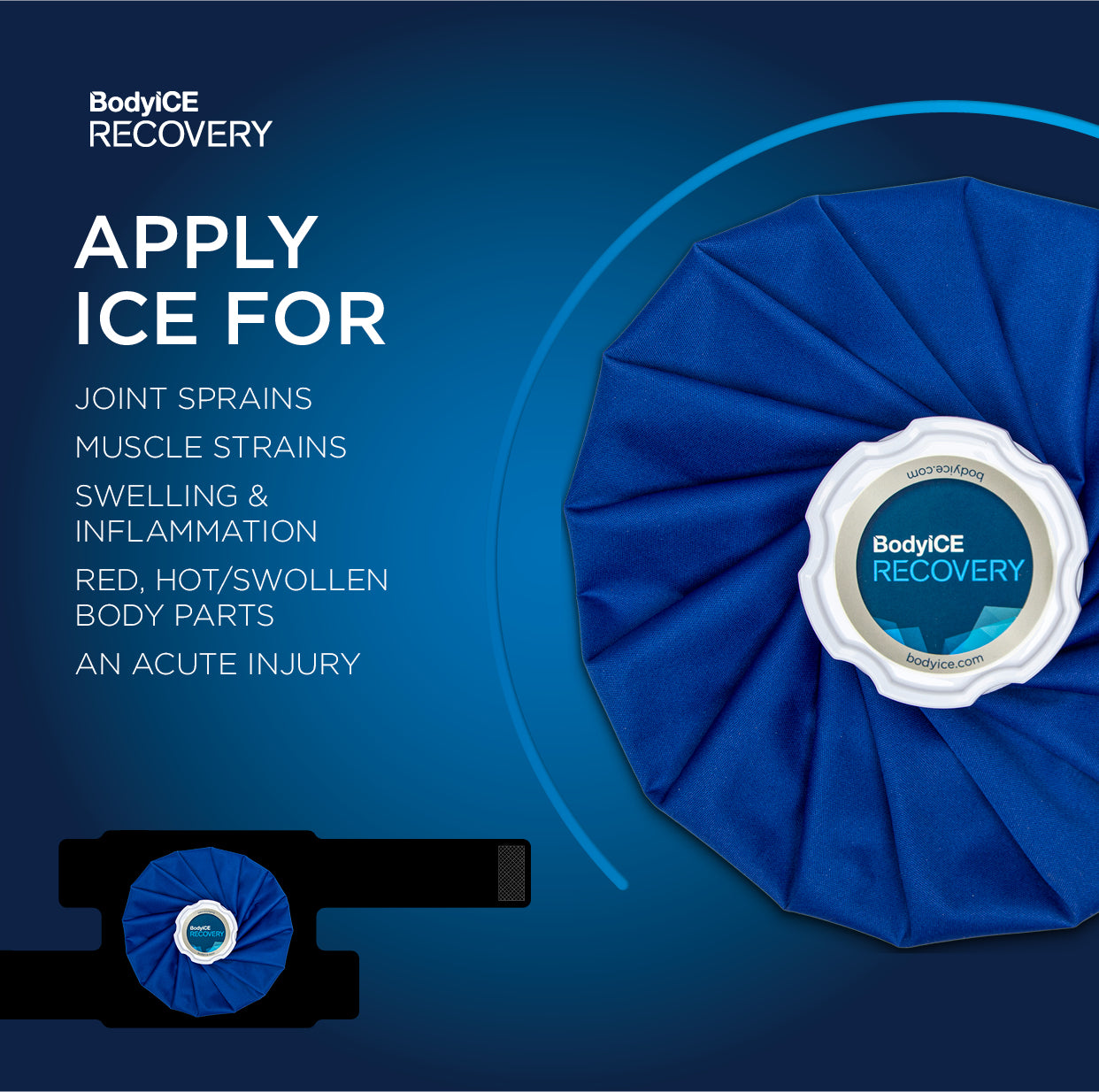
WHEN TO USE COLD THERAPY FOR KNEE PAIN?
Cold therapy is most effective for treating acute pain, swelling, and inflammation — especially after an injury or surgery. It works by constricting blood vessels, which reduces blood flow to the affected area, helping to minimise swelling and inflammation around joints and tendons. Cold exposure can also temporarily slow nerve activity, easing pain and reducing the need for medication. That’s why it’s long been trusted by medical professionals, athletes, and everyday movers alike.

When to Use Heat Therapy for Knee Pain?
Heat therapy is best suited for chronic or ongoing pain, stiffness, and non-inflammatory conditions such as osteoarthritis, fibromyalgia, or general joint and muscle tightness. Applying heat increases blood flow, relaxes muscles, and improves mobility — making it ideal for easing discomfort and supporting long-term recovery.
Both our classic BodyICE knee ice packs and Compression Gel Sleeves can be used for soothing heat therapy. Simply fill the classic ice bag two-thirds with hot tap water, or warm the gel sleeve gently in the microwave following the instructions provided. Then secure around your knee for targeted warmth and comfortable compression.
WHEN TO USE COLD THERAPY FOR KNEE PAIN?
Cold therapy is most effective for treating acute pain, swelling, and inflammation — especially after an injury or surgery. It works by constricting blood vessels, which reduces blood flow to the affected area, helping to minimise swelling and inflammation around joints and tendons. Cold exposure can also temporarily slow nerve activity, easing pain and reducing the need for medication. That’s why it’s long been trusted by medical professionals, athletes, and everyday movers alike.
When to Use Heat Therapy for Knee Pain?
Heat therapy is best suited for chronic or ongoing pain, stiffness, and non-inflammatory conditions such as osteoarthritis, fibromyalgia, or general joint and muscle tightness. Applying heat increases blood flow, relaxes muscles, and improves mobility — making it ideal for easing discomfort and supporting long-term recovery.
Both our classic BodyICE knee ice packs and Compression Gel Sleeves can be used for soothing heat therapy. Simply fill the classic ice bag two-thirds with hot tap water, or warm the gel sleeve gently in the microwave following the instructions provided. Then secure around your knee for targeted warmth and comfortable compression.


FAQ's
What is the best ice pack for knees?
Our Medium Universal is our most popular knee ice pack for post surgery recovery. It combines a leakproof ice bag with a secure neoprene strap for comfortable compression.
It will stay cold for over 2 hours.
Our Medium Compression Gel Sleeve is also a great option. It offers 360° hands-free hot or cold therapy.
Both are designed to relieve pain, reduce swelling, and speed up recovery. If you’re >95kgs, we recommend the Large Universal or the Large Compression Gel Sleeve.
Can I store the ice bag in the freezer?
Unless you have prepared the ice bag using the alcohol solution explained above, then you should not store the ice bag in the freezer. If you do, the melted ice will free solid and you will tear the ice bag when you try to break it up.
What if I don’t have ice?
No problem. We have a solution for you if accessing ice is a hassle and you won’t believe how simple it is! All you need to do is fill the ice bag ⅔ full with an alcohol solution. We recommend 1 part alcohol (methylated spirits is fine) and 2 parts water. Then place it in the freezer. Due to the alcohol (acting as an antifreeze) It won't freeze solid and will perfectly mould around your injured area. However, due to the lower freezing temperature of alcohol, the ice pack will be extra cold, so place a thin layer between your skin and the ice bag to avoid an ice burn. You can then store the ice bag in the freezer for ongoing use.
When should I use a knee ice pack?
Use a knee ice pack immediately after an injury, surgery, or flare-up to help minimise pain, swelling, and inflammation. Cold therapy is most effective during the first 48–72 hours after an acute injury.
How long should I ice my knee for?
Apply your knee ice pack or gel sleeve for 15–20 minutes at a time, every 2–3 hours as needed.
Can I use heat therapy on my knee?
Yes — for chronic knee pain you can use heat therapy to relieve stiffness, improve mobility, and encourage healing. Our ice bags can be filled with hot tap water, and our gel sleeves can be warmed in the microwave.
Are these ice packs safe for children?
Yes absolytely! Our ice packs are totally safe for children however, you should monitor your child whilst using the product to make sure they are comfortable at all times.
Which BodyICE Ice pack should I use in hospital after surgery?
We recommend using the Medium Universal knee ice pack after surgery. All hospitals have ice so you can request your nurse to fill your ice bag for you when you're recovering from surgery in the hospital ward.




